If you hate Henry VIII then this is the musical for you
By Cameron Woodhead, Vyshnavee Wijekumar, Andrew Fuhrmann, Bridget Davies and Barney Zwartz
MUSICAL
Six ★★★★
By Toby Marlow and Lucy Moss, Comedy Theatre, until October 20
Pop musicals and Tudor England are having a moment. Shakespeare’s tragedy of star-crossed lovers was rewritten to popular acclaim in the recent jukebox musical & Juliet. Surely, adaptations don’t get poppier than Juliet waking up next to Romeo’s corpse and singing Britney Spears’ Baby One More Time?
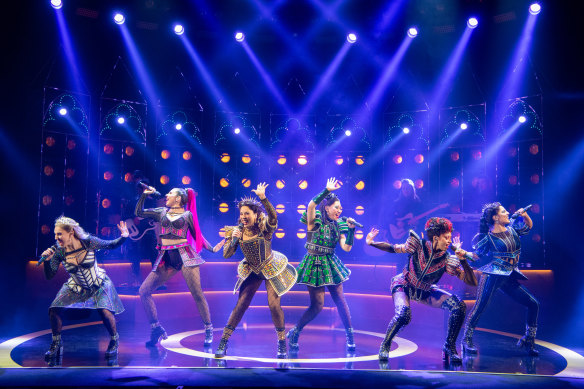
Only a cast of genuine triple threats could pull Six off, and they succeed with exuberance.Credit: James D Morgan / Getty Images
Well, having now seen Six – a musical romp that reincarnates the six wives of Henry VIII as pop divas – I’d have to say & Juliet has been pipped at the post for the poppiest show ever inspired by the 16th century.
It’s sort of a history lesson wrapped in a live concert. The six wives arrive onstage with the oomph of a girl band in front of a home crowd. They’re each bedecked in magnificent, glitteringly anachronistic faux-period costume, as if Gabriella Slade had waved some Elizabethan wand over a popstar’s wardrobe.
They’ve gathered, as they always do, to compete over who’s the most tragic queen. And it’s hilarious to watch the six queen bees at this pity party sass each other, or lob brutal, Mean Girls-style put-downs around, before bursting into catchy original songs across a range of pop styles.
There’s everything from Beyonce-like R&B, with backup vocals and sharp dance moves, to tonsil-baring power ballads. One number even re-scores Greensleeves into a turbo-folk anthem.
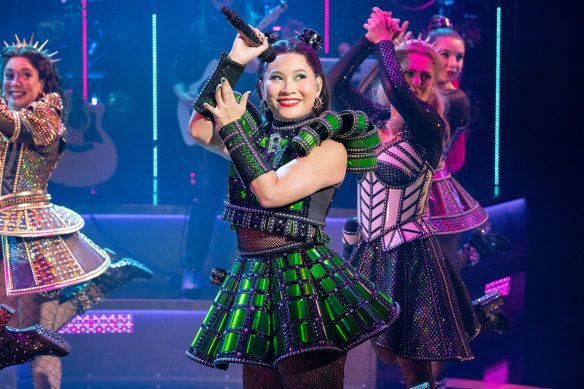
Deidre Khoo (centre) as Anne BoleynCredit: James D Morgan / Getty Images
Lyrics and dialogue adopt the register of performative youth. Anne Boleyn (Diedre Khoo) raps about her marriage causing the English Reformation thus:
“tried to elope
but the pope said nope…
the rules were so outdated
us two wanted to get X-rated
soon, excommunicated
everybody chill, it’s totes God’s will”
Which is totes funny, though when the contest devolves into trauma Olympics (and the queens start comparing the number of their miscarriages to win) the lone survivor, Henry’s last wife Catherine Parr (Giorgia Kennedy), launches a feminist “histo-remix”, liberating them all from King Henry’s shadow.
No weak link exists among the remaining queens. Kimberley Hodgson as Catherine of Aragon, Loren Hunter as Jane Seymour, Zelia Rose Kitoko as Anna of Cleves and Chelsea Dawson as Katherine Howard each brings a vital spark to individual highlights, with enough left in the tank for high-energy ensemble work – smooth backup vocals, perfectly synchronised choreography, rapid-fire comic repartee – that, along with rockstar digital set and lighting, really ratchets up the concert atmosphere.
Only a cast of genuine triple threats could pull Six off, and they succeed with such exuberance I wouldn’t be surprised if (just like pop concerts) loyal fans return again and again.
Reviewed by Cameron Woodhead
MUSIC
Last Dinosaurs | KYORYU Tour ★★★★
The Croxton, August 10
The sound of electric guitar fills the air and the stage lights flicker as Last Dinosaurs launch into Afterlife off their latest album, KYORYU.

Last Dinosaurs perform at The Croxton in Thornbury in August 10.Credit: Richard Clifford
This is the four-piece indie rock act’s first Australian headline tour since December 2022. The Melbourne show brings a welcome end to the circuit for the Brisbane musicians, as lead singer Sean Caskey professes: “Long time no see, we missed you so much.”
The album name KYORYU is a portmanteau of band members Lachlan and Sean Caskey’s Japanese names, which translates to “dinosaur”.
“We got any OG Dinos fans in the house?” enquires lead singer Sean. The packed floor of the Croxton Bandroom cheers in agreement. Aptly, the band’s set brims with nostalgia as they play tracks from older albums Wellness, Yumeno Garden and In A Million Years.
The band members are dressed in suits, a nod to having drawn inspiration from The Beatles’ Twist and Shout performance on The Ed Sullivan Show for Paranoia Paradise. The spotlights on stage change colours, reflecting off the shimmery curtains behind to light up the band members with technicolour hues.
Last Dinosaurs’ upbeat tracks, such as Eleven, Apollo and Weekend, are reminiscent of the indie sleaze era. More sedate tracks, such as Elton and Slow, were played mid-set, noticeably lulling the ambience. When the pace picked up again with Honolulu, the crowd went wild.
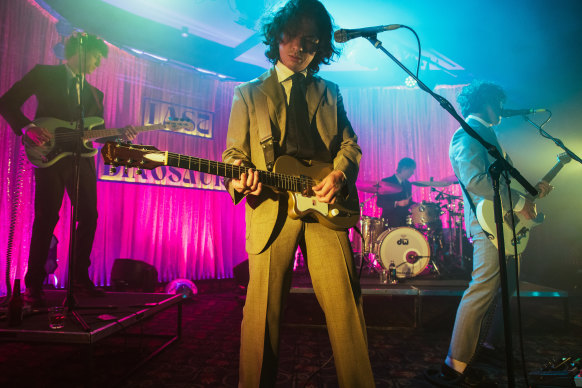
The simplicity of the experience enabled focus on the connection between the performers, music and audience.Credit: Richard Clifford
Before playing their popular track Zoom, Sean says: “If you know the words to this song, I want to feel you scream them at me. And if this song made you feel something at any point in your life, I want to make you make this place f---ing shake like an earthquake.” He then proceeds to jump up and down, and the crowd does the same, clapping their hands and shouting out the lyrics.
There was no unnecessary fanfare in terms of special effects or crowd work, nor any requests from the band to turn mobile phone torches on to invoke sentimentality. The simplicity of the experience enabled focus on the connection between the performers, music and audience.
The Last Dinosaurs are far from extinct, reinvigorating the local music scene with the youthful innocence of the noughties.
Reviewed by Vyshnavee Wijekumar
MUSIC AND DANCE
Silence and Rapture ★★★
Australian Chamber Orchestra, Melbourne Recital Centre, until August 12
Much thought has gone into crafting this highly theatrical evening of works by J.S. Bach and the Estonian composer Arvo Pärt. The program offers a clear sense of narrative and the effort to create an immersive spectacle should be applauded.
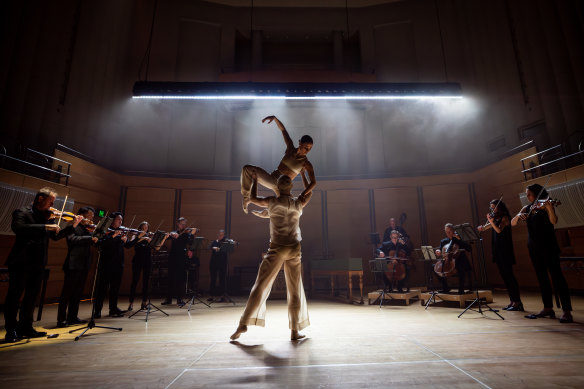
Silence and Rapture is an admirable attempt to fuse dance with poetry and music in a more theatrical form of recital.Credit: Daniel Boud
Nonetheless, the overall mood of the concert is more ruminative than rapturous.
The great attraction is the stylish, clear-toned performance of Iestyn Davies in his Australian debut. What makes this supremely talented British countertenor so unusual is the combination of meticulous control and expressive power.
In other words, Davies is both a storyteller and a gifted technician. His enthralling rendition of the plaintive Erbarme dich from St Matthew Passion is the high point of the evening.
The evening includes choreography for two dancers by Sydney Dance Company artistic director Rafael Bonachela. It’s an admirable attempt to fuse dance with poetry and music in a more theatrical form of recital.
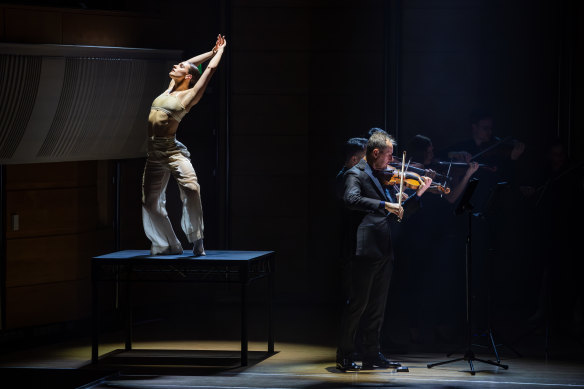
The inclusion of dance in Silence and Rapture is at times a distraction.Credit: Daniel Boud
And the combination of voice and movement certainly heightens the uncanny effect of Pärt’s ghostly version of My Heart’s in the Highlands, where slow, cryptic gestures complement the otherworldly sentimentality.
Elsewhere, however, it’s hard to see how Bonachela’s choreography is necessary. Where it’s not a distraction, it’s merely ornamental: scribbled arabesques at the bottom of a larger aesthetic project.
The evening is divided into five chapters, the last of which is intended to lead us into contemplative silence. Here we have Bach’s fragmentary Fuga a 3 soggetti, left unfinished by the composer at his death.
The evening’s final piece is then the fourth movement of Paul Hindemith’s Trauermusik. This is apt, not only because it quotes from Bach’s Wenn wir in höchsten Nöten sein, but because it synthesises all that comes before.
If you dilute an evening of Bach with sufficient quantities of Arvo Pärt’s shimmery mysticism then, yes, you do get a feeling approximate to the unreal softness, the dreamlike passivity of Hindemith’s elegy.
Reviewed by Andrew Fuhrmann
THEATRE
In Search of Applause ★★
Maroussia Vladi, The Butterfly Club, until August 17
I couldn’t help thinking of Melania Trump watching this one-woman show. It’s a black comedy written from the perspective of a so-called “trophy wife”, and no one has been more upfront about the art of that deal than Melania. In 2005, asked if she’d have married Trump had he not been rich, she quipped: “If I weren’t beautiful, do you think he’d be with me?”
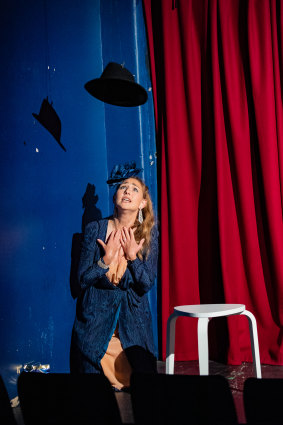
Maroussia Vladi in her one-woman show In Search of ApplauseCredit: Nicholas Robertson
The idea of the trophy wife would seem to represent patriarchy at its most transactional – outside sex work – and the entanglement of love and extreme financial inequality is a reminder that most marriages used to be this way. A wife in the Victorian era was utterly dependent on her husband – she couldn’t own property in her own right – so you can see why early Communist thinkers proposed that matrimony itself was a form of prostitution.
For Lorelei, the feeling of compromising herself springs from a different source. She used to be an artist, an actor, but abandoned the boards to wed Nigel – a stinkingly rich workaholic who does something or other in fintech.
Her marriage isn’t cynical: Lorelei says she really likes Nigel, though she’s hardly immune to the pleasures of international jet-setting, luxurious accommodation, and every material comfort money can buy.
The price, alas, is emotional, sexual, and existential poverty. Nigel ignores her whenever mutual leisure isn’t scheduled, and Lorelei becomes obsessed with maintaining her fitness and beauty. Striking up conversations with Harry, the hot young musician who serves her at an artisanal juice bar, Lorelei’s prejudices and contradictions emerge, and she warns Harry against the path she has taken.
In Search of Applause has some winning comic moments – mostly slivers of physical clowning, and sequences that leap into formal exaggeration and overt satire of a life blighted by affluenza.
As character-based comedy, it’s undercooked. The internal monologue lacks a level of character definition, a human complexity that might have achieved poignancy.
The script is clunky and too bald in its treatment of the conflict between material needs (and the coercive power of capital) and intangible ones – the need for love and attention, creative expression and meaning. And the profound question of how gender plays into Lorelei’s predicament remains in the shallows: portraying one-sided conversations with absent men who stand as inhuman ciphers doesn’t help.
Maroussia Vladi does have obvious comic potential as a performer, and this monodrama feels like a step on the road to unlocking it.
Reviewed by Cameron Woodhead
THEATRE
Piper ★★★
Frenzy Theatre Co, Theatre Works, until August 24
Right before heading to this wildly maximalist stage adaptation of The Pied Piper of Hamelin, I read some dreadful news. Rat numbers are increasing in Melbourne’s Docklands again. Apparently, the soulless warren of a place has become a rodential hot spot – according to local rat catchers, at a time when they report that demand for their services has decreased.
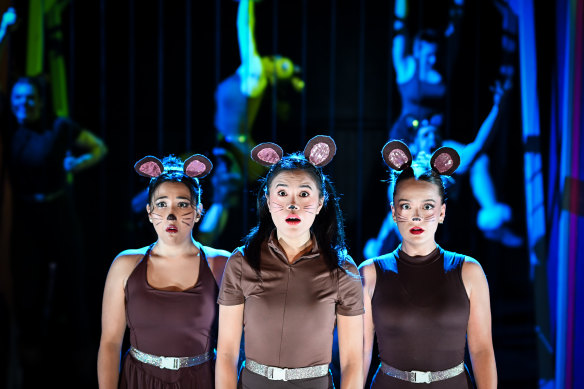
Piper plays unexpected games with the visceral disgust people feel towards rats.
If those doing it tough in the current economic climate really are cutting corners on pest control, we might well wish for a piper soon enough. Rats! Ugh. For many, they’re a source of visceral disgust.
Frenzy Theatre Co’s Piper plays unexpected games with that disgust and mashes the first half of Grimm’s fairytale into a febrile world where information is routinely unreliable. This Hamelin is as prey to disinformation and fake news and shameless spin from vested interests as it is to rats, and you can wade right into the social satire.
For half an hour before the start time, the enormous cast – 24 in the ensemble – forms an interactive performance installation onstage, a funfair Hamelin you can wander through.
The show itself turns Hamelin’s rolling crisis into an unsettling and darkly funny extravaganza, and theatre lovers will be impressed by the scale of the artists’ ambition and all the logistical challenges overcome in this work.
It’s theatre with the lot – combining berserk eisteddfod, surreal projections and Marxist agitprop (Guy Debord’s “society of the spectacle” seems to be an influence), alongside group choreography, circus arts, original musical theatre, and fairytale set and costume.
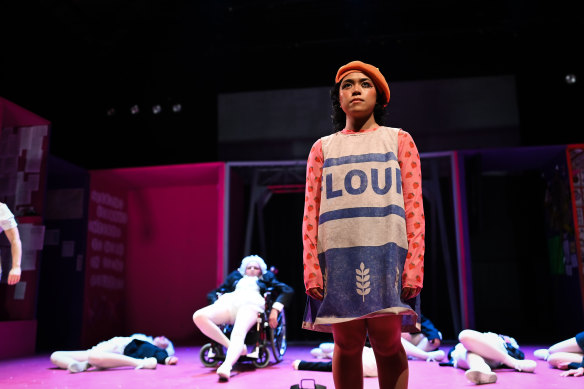
Piper is an ambitious work – it’s “theatre with the lot”.
Piper is deeply political, and if it’s sometimes too verbose for drama, it never reduces itself to didactic messaging.
The rats might be a cruel scourge on humans – vermin, vectors of disease – but it is human cruelty under the microscope. There are bleak flickers of rats as a metaphor for marginalised social groups, for instance, and the fate of lab rats in the cosmetics industry is portrayed in gruesome detail.
Incompetent and corrupt councillors dither and stonewall and play for political advantage. Contradictory public messaging about the crisis emerges. Citizens take matters into their own hands. Social cohesion goes out the window.
The Pied Piper and the town’s children are almost an afterthought.
Piper is much more interested in showing us, in the theatre industry no less than other areas of public life, what the powerful can get away with when people live in thrall to an endless cycle of distraction and disgust.
Reviewed by Cameron Woodhead
OPERA
La Rondine ★★★★
Victorian Opera, Palais Theatre, until August 10
Puccini is everywhere in 2024. The centenary of the composer’s death has been cause for artistic celebration for opera companies worldwide. There’s a Tosca, Boheme or Puccini Gala around every corner. That increase in frequency would stand out for most, but not for opera’s most popular man (though Verdi and Mozart would rightly contest that title).
Puccini is always everywhere. He wrote 12 operas, many of them what artistic directors turn to when a company needs to improve its bottom line. The aforementioned La Boheme and Tosca, Madama Butterfly, Turandot – audiences never tire of them. Throughout the past century, people have come back for Puccini again and again. Concise, relatable stories – there’s rare few princesses or dragons, and you’ll leave the theatre in under three hours – coloured by glorious orchestral texture and memorable melodies make his works universally loved by novice and connoisseur alike.
But because of this incredible popularity, La Rondine is no one’s favourite Puccini opera. The word masterpiece can really be a relative term. Is Rondine a masterpiece compared to much of opera? Sure. Is it a masterpiece in comparison to Puccini’s own canon? Not really. Boheme looms large over it musically, coupled with an unbalanced storyline and thoroughly meh ending.
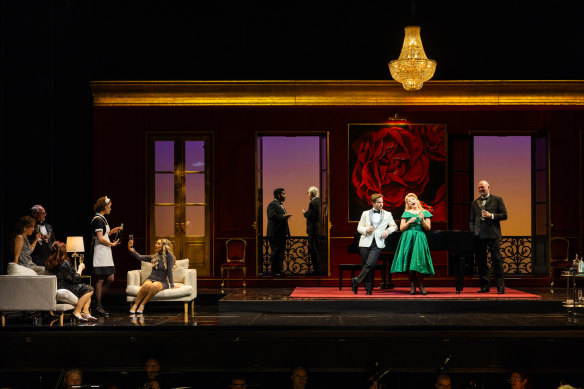
La Rondine is one of Puccini’s less-performed operas.Credit: Charlie Kinross
Leading lady, Magda, is an unhappy Parisian courtesan who is kept by a wealthy older man but longs for the freedom of her youth. She falls in love with country boy Ruggero and leaves the city to start a new life with him, only to realise his family will never accept her, so she returns to her old life. She is the “rondine” (the swallow) who flies toward the sun.
La Rondine is the first mainstage production at Victorian Opera with new artistic director Stuart Maunder at the reins. His direction is fun and effective, and he shrewdly deals with the dissatisfying ending. Richard Roberts’ sets and costumes are also superb.
Swedish conductor Tobias Ringborg shapes the score like a man who knows and loves Puccini with all his heart. He leans Orchestra Victoria into Puccini’s lilting rhythms, with frivolous lightness at appropriate times and swirling drama at others. The Act II climax, with clever fireworks-type lighting by Gavan Swift, involving the entire cast and orchestra, was spectacular. The fervent Ringborg pushes excitement through the music, even when the drama unfolding onstage doesn’t match the quality of the score.
Brisbane-born, Hannover-based soprano Kiandra Howarth is an affecting Magda. The role is light work for her outstanding soprano, which is golden warm, and she nailed the showpiece, Chi il bel sogno. It would be wonderful to see an Australian company bring her home for a Mimi or Contessa, something with more authentic emotion.
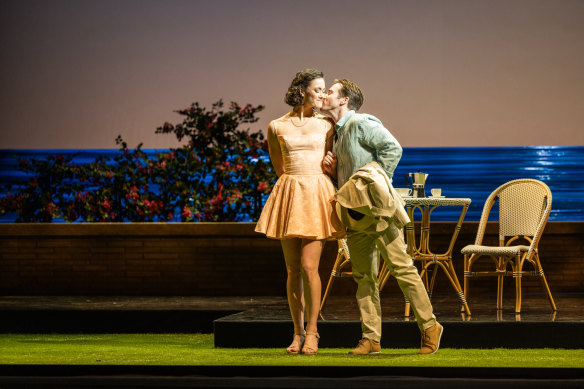
In the supporting roles of Prunier and Lisette, Queenslanders Douglas Kelly and Nina Korbe are perfect.Credit: Charlie Kinross
South Korean tenor Won Whi Choi plays her lover Ruggero, and though the character is a bit of a sap, Choi possesses a true Puccini tenor sound (think Pavarotti et al). With a thrilling top and gleaming colour throughout, he’s vocally flawless.
In the supporting roles of Prunier and Lisette, Queenslanders Douglas Kelly and Nina Korbe are perfect. They actually have chemistry! Kelly is charming – a natural actor – and possesses excellent evenness in range and tone. He is a young tenor to watch. Korbe is stunning, her soprano glorious at the top and her characterisation delightful.
The duo of Howarth/Choi is less successful than Kelly/Korbe, though it’s hard to tell what’s to blame. Is it that Choi appears wooden, or that the character is a simpleton? Is Howarth’s Magda one-dimensional, or is the character merely unsympathetic? Either way, no one benefits from the uneven plot. Still, it’s an appreciated choice by Victorian Opera, in a year otherwise stacked with Puccini favourites.
Reviewed by Bridget Davies
THEATRE
Apologia ★★★
Nicola Gunn, Malthouse Theatre, until August 18
It’s wonderful to see Nicola Gunn making theatre back in Melbourne. The performance artist has been based in Europe for years but developed her inimitable style here, in works such as In Spite of Myself, Hello My Name Is and Piece for Person with Ghetto-Blaster.
Surrealist theatre and physical comedy inform that style and predominated during the earliest phase of Gunn’s career. It wasn’t until she collapsed art into life and started making the live equivalent of autofiction – “autotheatre”, if you will – that her distinctive brilliance coalesced into (pardon my French) an oeuvre.
Gunn’s Apologia is the second part of a trilogy exploring translation and interpretation, and it springs from her fantasy of becoming a French actor.
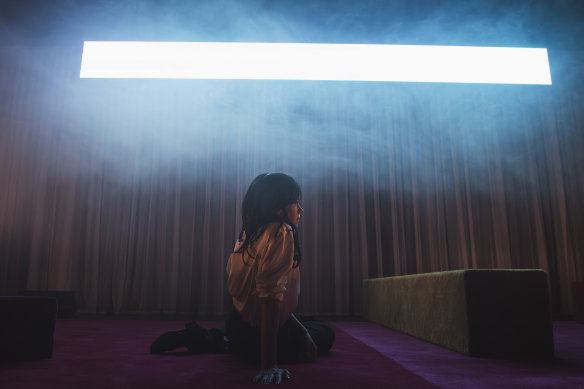
Apologia is the second part of a trilogy exploring translation and interpretation.Credit: Gregory Lorenzutti
Absurdity lurks in the premise – Gunn isn’t French and can’t speak the language – though she has an entrée in the voice of Séverine Magois, a bracingly opinionated French translator.
We don’t meet Magois in the flesh. She’s initially present through vaping noises emanating from a speaker. Then Gunn arrives, tells off her invisible interlocutor for vaping inside, and begins a wide-ranging conversation with Magois’ recorded voice about realising her ambitions.
Offbeat humour ripples through what becomes a defence – an apologia – of subjectivity and authenticity, and an interrogation of how language shapes those ideas.
Complexities deepen when the scene shifts to two Japanese tourists disappointed by Paris (Yumi Umiumare and Taka Takiguchi), performed in Japanese with English subtitles.
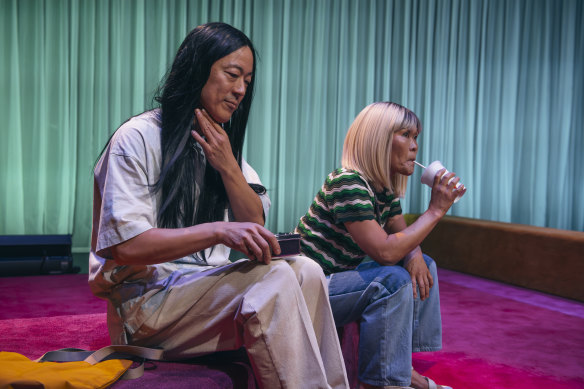
Taka Takiguchi and Yumi Umiumare in a scene from Apologia at Malthouse Theatre.Credit: Gregory Lorenzutti
So-called “Paris Syndrome” is a psychological phenomenon first documented in Japan: it describes the depression and disillusionment experienced when the City of Love doesn’t match the romanticised idea of it that tourists are expecting.
Does Gunn’s wild desire to be a French actor represent a theatrical version of Paris Syndrome? Well, there’s frustration and despair at the disparity between expectation and reality, but she does get to live fragments of her dream.
Scenes where she appears in a French film (as a woman grief-stricken at learning of her mother’s death) possess a poise, visual stylishness and emotive intensity that suggests the real deal, before the piece abandons verbal for visual language in a charming, entirely silent conclusion.
If Apologia doesn’t feel entirely satisfying and complete as a standalone, it’s strikingly original theatre that will stimulate reflection on the philosophy behind performance and translation. How do you translate your “self” (or someone else’s) into another language? How does language itself influence our experience of reality, of art?
These questions are probed through a tragicomic blend of intimacy and artifice, in a production enlivened by a talented international team of design collaborators, including Emma Valente and Kate Davis from The Rabble.
Let’s hope some arts festival programs the trilogy on completion. As Apologia shows us time and again, context is crucial to the act of interpretation, and I’m not sure the show’s true worth can be appreciated without it.
Reviewed by Cameron Woodhead
MUSIC
Maxim Vengerov in Recital ★★★★★
Hamer Hall, August 7
Had I thought about it in advance, I would have predicted Maxim Vengerov’s recital would be a five-star affair. After all, Vengerov is among the few candidates for world’s best violinist, and at 49 he is absolutely in his pomp. And so it came to pass – Vengerov and accompanist Polina Osetinskaya were sublime, and were rewarded with a standing ovation.
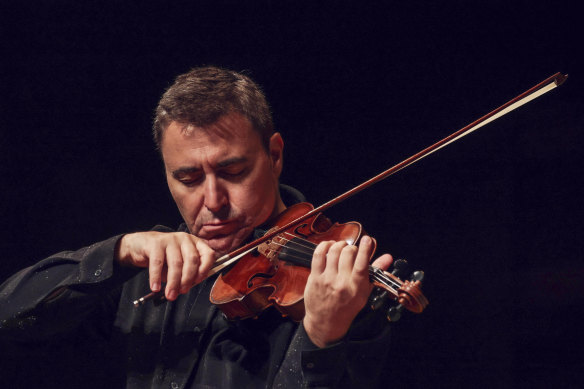
Maxim Vengerov performs at Hamer Hall on August 8, 2024.Credit: Nicole Cleary
This was the fourth time I’ve heard Vengerov in Melbourne, and it was the best, two hours of bliss. The program was divided between Russia and France, with two works by Prokofiev in the first half, and Franck and Ravel in the second.
The Five Melodies provided a languorous, lyrical opening before the familiar spiky Prokofiev rhythms and harmonies appeared in the bleak but gripping first Violin Sonata. Then came a complete contrast in the poetic Franck sonata, a work of gentle beauty delivered with elegance and subtle refinement.
Vengerov made so light of any technical challenges, so unostentatiously, that one could doubt they were there. But they certainly were – for example, ferocious and flawless double stopping, wondrously pure and accurate harmonics, thrilling bravura runs, delicate dynamics, effortless projection and ravishing pianissimos that floated out to fill the hall. He emphasised artistry over pyrotechnics – but then came Ravel’s vigorously virtuoso Tzigane and all the dramatic flair one could wish for.
Osetinskaya, clearly a marvellous musician in her own right, was a delicate and sensitive accompanist, though once or twice I felt she was too unobtrusive.
The pair graced the audience with four encores: Prokofiev’s march from The Love for Three Oranges, two lushly romantic bonbons in Kreisler’s Liebesleid and Liebesfreud, and the big theme from Rachmaninov’s Rhapsody on a Theme of Paganini.
Reviewed by Barney Zwartz
The Booklist is a weekly newsletter for book lovers from books editor Jason Steger. Get it every Friday.
correction
An earlier version of this story referred to Poulenc. It’s been corrected to Franck.